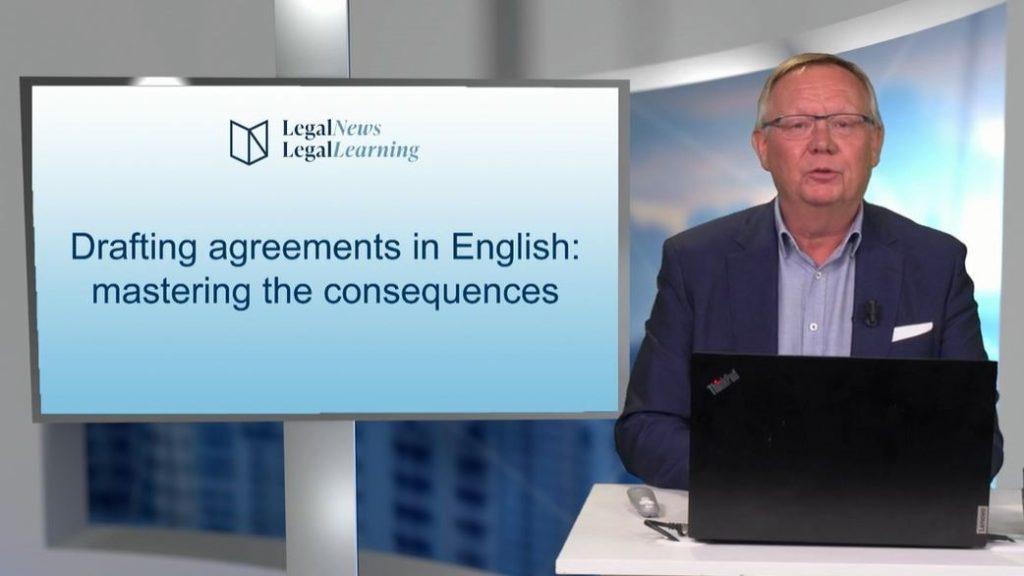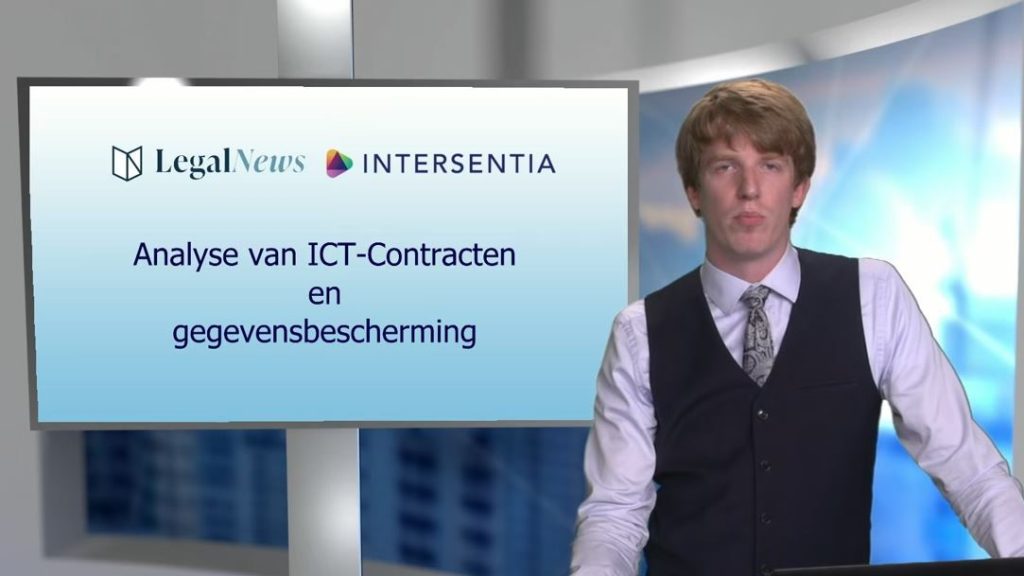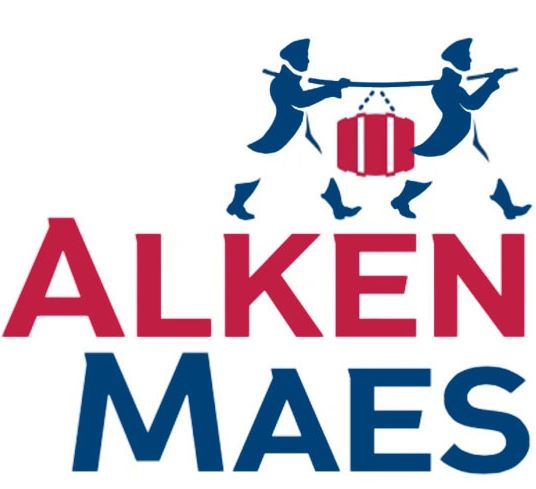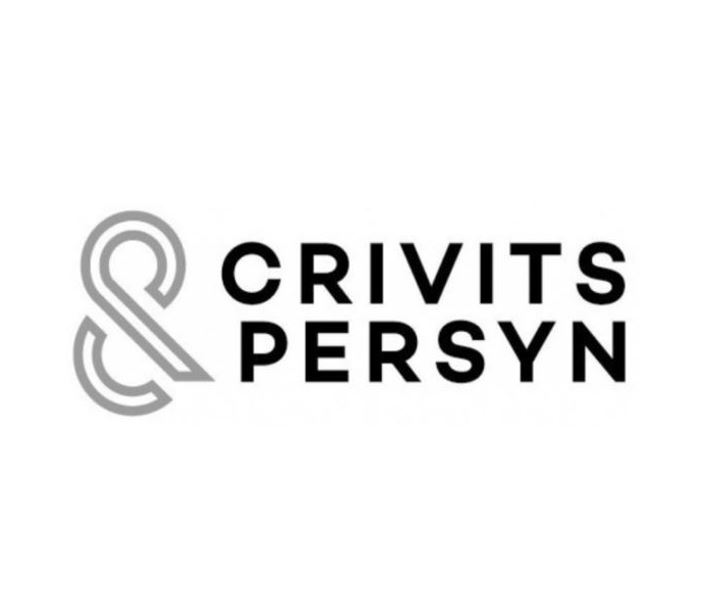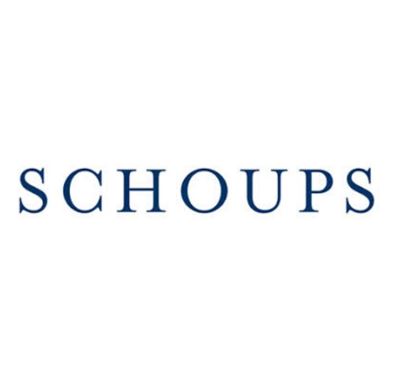Handelspraktijken en consumentenbescherming:
recente topics onder de loep
Dr. Stijn Claeys en mr. Arne Baert (Racine)
Webinar op vrijdag 30 augustus 2024
Aandachtspunten bij het opstellen
en analyseren van ICT-contracten
Mr. Lynn Pype en mr. Liesa Boghaert (Timelex)
Webinar op donderdag 16 mei 2024
Intellectuele eigendomsrechten in de onderneming:
wie is eigenaar van door werknemers en dienstverleners ontwikkelde creaties?
Dr. Nele Somers (ARTES) en mr. Veerle Scheys (Mploy)
Webinar op dinsdag 23 april 2024
Fusing corporate brands: the IP implications of growth through M&A (Novagraaf)
Author: Tom Farrand (Novagraaf)
Date of publication: 24/07/2017
Where businesses merge with or acquire other businesses, the challenge for IP professionals is not always as simple as ensuring a transfer of the associated rights – there is also the question of combined or conflicting brands.
This article first appeared in World Trademark Review issue 67, published by Globe Business Media Group – IP Division. To view the issue in full, please go to www.WorldTrademarkReview.com.
We all know that brand value is a major driver of business sales and acquisitions. However, while intellectual property (IP) plays a key role in creating that value, IP practitioners complain that intangible assets do not always receive the necessary due diligence before – or the resources after – transactions to ensure that rights are transferred efficiently to the new owners.
That situation can be exacerbated where a purchasing company acquires or merges with a complete business, including the entire registered legal entity. The resulting new entity brings its own particular set of IP challenges, in particular for merged (or portmanteau) corporate brands.
Merging brands and branding mergers
Branding has different and distinct drivers, depending on whether you are looking at it from a business (marketing) or legal (IP) perspective. Decisions on how to merge two businesses will often be driven by negotiating positions or market realities but, as a general rule, tend to take one of three approaches:
- Assimilation or backing the stronger horse – two branded businesses merge, with the merged business taking the name of the stronger brand (eg, Norwest Corporation + Wells Fargo & Company = Wells Fargo (1998)).
- Business as usual – the merged entities retain their existing branding and identity (eg, Procter & Gamble and Gillette (2005)).
- Fusion – elements of both sets of corporate branding are incorporated into a new identity (eg, Exxon + Mobil = ExxonMobil (1999), United + Continental Airlines = United Airlines (2011)).
Another approach is to come up with a completely new corporate brand – for example, Diageo was created through the merger of Grand Metropolitan plc and Guinness plc (1997). While this comes with its own set of issues around (re)building a reputation and corporate brand value, it does avoid most of the IP issues which are the subject of this article.
Weighing up pros and cons
From a branding perspective – and from the more specific perspective of creating corporate brand value – fusion is the most attractive option of the three listed above. It provides the potential to create something new and exciting while retaining some or all of the legacy brand value of the pre-merger businesses. This method of branding a merged business is also a good fit with the broad thinking behind corporate mergers – that the merged whole will be worth more than the sum of its parts.
With assimilation, by comparison, the dropped brand can be quickly forgotten and with it most of the brand value from that part of the business. If the merged entities decide to continue with business as usual, additional brand value is hard to grasp and there is a risk that values may actually become diluted as a result of lack of clarity in the newly merged business’s branding.
All of this is borne out in an extensive study by Harvard Business School (“Why fusing company identities can add value”, 2011), which demonstrates that merged businesses adopting a fusion brand for their post-merger corporate identity perform significantly better than those that adopt one of the other approaches.
On the other hand…
However, from the perspective of trademark and IP protection, the reverse is true and the fusion approach creates myriad potential issues, as the new branding creates multiple conflicting rights.
Resolving these issues can involve significant cost and time, and may create legal risk. For that reason, the assimilation and business as usual approaches are more attractive from the legal perspective, as they are more likely to result in a clean, secure and efficient result with regard to IP protection.
Yet nobody said that good branding was supposed to be simple. Our focus in this article is on some of the challenges presented by a fusion approach to mergers.
Make it new or leave well enough alone?
Some well-known examples of the fusion approach include:
- Unilever (1920s);
- GSK (1990s);
- Kraft Jacobs Suchard (1990s);
- PwC (1990s); and
- AB-InBev (2000s).
Counter examples of when it can be better to carry on under separate brands include:
- Diageo (1990s – Guinness and Grand Metropolitan); and
- Mondelez (2010s – de-merger/spin out of Kraft Food Groups confectionery brands).
Managing fusion: creating new IP
As mentioned above, the fusion scenario is the most troublesome from the perspective of a trademark practitioner. In essence, a new piece of (usually hybrid) intellectual property is created, utilising existing elements of branding from different legal entities, often including and mixing words and visual identities.
These IP elements are owned by the different legal entities which form part of the merger and may include registered trademarks, registered designs, copyright and rights acquired through use (eg, passing-off and allied rights in common law countries and rights under unfair competition law).
The ability of the newly merged business to register the new corporate brand may be affected by the pre-existence of the legacy trademark registrations in the name of the (old owner) vendor company. This will present a problem in any jurisdiction where registration of the new intellectual property is sought and where the local registration procedures include objections raised in examination on comparative grounds. In other words, an earlier right owned by a legacy company will be raised as an objection against the application to register the new fusion brand. Some useful examples to consider include the following:
- Company A trades under corporate brand A.
- Company B trades under corporate brand B.
- Company A acquires or merges with company B.
- The newly merged company trades under new corporate brand AB.
- Company AB leaves ownership of legacy brands A and B where they are.
- Applications to register AB as a trademark are held up by prior legacy registrations of A and B in the old company names (a real-life example of this was merged company GlaxoSmithKline).
Managing fusion: who should own rights?
Such issues are not insurmountable, but can increase costs, cause inconvenience and, in extreme situations, affect a company’s ability to enforce its rights. A good solution can be to create a target entity which owns IP rights in the newly formed business and to which legacy rights can be assigned – this will remove the issue of conflicting ownership.
However, significant work is involved in recording a change of ownership for a global portfolio of trademark registrations. Such changes may also create conflicting fiscal issues around the transfer of assets. This is especially the case in global corporations where tax planning and internal transfer pricing are important.
In addition, it is not always straightforward to assign unregistered rights. In common law jurisdictions, rights acquired through use of a trademark are firmly associated with the entity which actually uses that mark. Those rights cannot normally be assigned unless this is part of the transfer of the whole business. Careful thought and planning are required in order to ensure that these rights do not get lost in the wash.
Consents and licences
One option is to retain the existing (legacy) ownerships of IP assets and use consents in order to enable the new entity to register the new fusion brand. This works in many (but not all) jurisdictions. However, it can add to the complexity of rights enforcement (eg, in opposition or infringement actions) and create risk with regard to the rights holder’s ability to demonstrate genuine use of the various trademark registrations involved.
In order to ensure that the rights arising from use of the trademarks in the business inure to the benefit of the appropriate owner, licence agreements can also be executed.
Partial mergers and conflicting rights
In some cases, a merger does not involve the complete businesses, but only parts of them. This can create a situation where a legacy corporate brand remains owned and used by one entity, while a fusion brand is created for the newly merged business.
For example, the owner of a brand used for cleaning products might sell off its industrial cleaning products division, while choosing to retain the domestic cleaning products division. While this may be entirely logical from a commercial perspective, it will create a challenging legal situation. If there is a single trademark registration covering cleaning products, who will now own it?
In such case, some kind of consent to registration will need to be agreed in advance and the risks associated with conflicting legacy rights evaluated and mitigated. However, such situations are not permitted in all jurisdictions – the only practical solution may be single ownership and a licensing arrangement.
A real-life example of this arose in the smartphone space, when high-profile corporations Sony and Ericsson formed a joint venture, which was originally branded Sony Ericsson. While the original joint venture was formed in 2001, trademark conflicts lingered until 2011, when Sony bought out Ericsson and rebranded the business Sony Mobile. (The Ericsson business continues in the telecoms infrastructure space.)
De-mergers and spin-offs
Spin-off and business separations can create the same issues (eg, where new companies are created which also need to use the legacy brands). While this may not be a problem in practice because the resulting businesses are not competing, issues may arise in terms of trademark registrations, as registered rights may need to be divided and cross-consents executed.
Another potential problem emerges when one or more of the divided businesses opts to extend its scope of operations to a conflicting line of business. These situations can be managed, but require careful thought and planning, as well as the execution of suitable agreements and partial assignments.
A good example is that of Kraft Foods Group and the spin-off of its confectionery business, which resulted in the creation of new corporate brand Mondelez. Here, the spin-off solved the potential problem of conflicting corporate branding by inventing a new brand for the confectionery business. While such an approach involves cost and risk, it is an established path for brand-oriented businesses – the hurdles and pitfalls are well known and thus more easily avoided.
Pros and cons of retaining legacy IP ownerships
It may be desirable or indeed necessary to retain existing ownership of the brands in the businesses (eg, if the pre-merger businesses continue to trade under their existing names or in order to form brand-based operating divisions or product lines within the new fusion company).
Retaining existing ownerships has the added bonus of negating the need to execute assignment documents and record changes of ownership on trademark and other registers. On the other hand, if a newly created fusion brand is to be registered, the conflict between the registered legacy brands and the new brand will have to be resolved.
Avoiding potential pitfalls
As with most IP-related processes and strategies, overcoming potential hurdles to the fusion approach is all in the planning. At the very basic level, in-house legal and IP heads should treat the new company brand in the same way as they would the launch of a new brand. That includes, for example, carrying out all of the normal investigations, risk assessments and planning that you would carry out for any other major product launch. IP heads would also be well advised to flag potential issues early in order to ensure that they are involved in planning from the outset.
Due diligence
Search and clearance of a new brand is critical to the launch of any new product. It follows that a proposed new fusion brand should be properly searched and cleared.
The brand creation process may result in a new brand name which creates new trademark conflicts. However, it is more likely that the conflicts and risk involved in adopting the new brand will have been encountered previously with the legacy brands. Either way, conflicts need to be investigated, managed and cleared. Existing consent and coexistence agreements will also need to be reviewed and possibly revised or renegotiated.
IP audits
As part of the pre-merger due diligence, there should ideally be an audit of existing IP rights. The results of such an audit will inform and guide the planning in relation to the adoption of a fusion brand post-merger. In particular, where an audit has been possible, it should have revealed all the issues with existing brands (eg, infringement, conflicts and up-to-date chains of title), thereby also revealing many of the potential issues with the fused brand.
Updating records is, in general, a time-consuming and often costly process, bound as it is by the cleanliness of the existing records and the vagaries of each jurisdiction’s recordal system. However, there are steps that companies can and should follow to smooth the process and minimise the demands on their internal resources. To achieve this, the audit should ideally answer the following questions in relation to the IP assets being acquired:
- Exactly which entity is recorded as the owner of each right?
- What is the status?
- Are the rights in force?
- Are licences in force and recorded against any rights?
- Are charges or other interests recorded against any rights?
- Do the registered rights match those used in the business?
- Are there any unregistered rights?
Obtaining the answers to these questions in advance enables effective planning for the newly merged business.
Good housekeeping
In our experience at Novagraaf, the extent to which companies are diligent in registering and maintaining intellectual property and IP records varies. If the vendor has followed best practice – either as a matter of ongoing routine or to prepare for an asset sale – then this inevitably makes the recordal process easier to execute. The ideal is IP rights which are in force and which have a sensible ownership structure and up-to-date ownership details recorded.
However, it is more often the case that rights are not kept up to date, putting them at risk in terms of validity and enforceability. If this is the case, it should come out during the pre-merger due diligence process and may result in more complicated requirements for the post- completion recordals (as well as potentially affecting the merger or sale process itself ). The workload and timescales are even more demanding where a business has been acquired at short notice (eg, as a result of a hostile takeover).
Nonetheless, the IP audit process gives a business the opportunity to streamline its portfolio as part of the relaunch of a fusion brand. IP portfolios are frequently cluttered with unused registrations or starved by gaps in coverage, for example. Undertaking an audit in advance or even after a sale or merger provides the means to assess the value of a portfolio against the costs involved in growing and maintaining the IP rights that it contains. Choosing to centralise IP ownership as part of the IP recordal process can also help to avoid unnecessary costs and risks (eg, due to refusals or duplicate records).
Finally, consents (where needed) to the use and registration of the new brand – both from within the merged business and, more importantly, from third parties – should be in place before the new brand is adopted.
When a plan comes together…
As is usually the case with intellectual property, it saves time and money over the longer term if a strategy is in place in advance of a brand takeover or launch. The same is true when two businesses merge. IP lawyers and trademark attorneys are not always included in discussions from the word go. However, the earlier they are included and can be involved in the planning, risk assessment and risk mitigation, the better the results will be.
Putting in place an executable plan which actively addresses the IP issues around the newly created brand will make the whole process much less painful. That is true whether the business opts for a fusion approach, an assimilated or business as usual brand, or something completely new.
Similar considerations to those set out above will also likely arise in relation to copyright, designs, domain names and patented products, ingredients, methods or components. The compelling commercial benefit of a transaction may override these IP-specific obstacles, but it is helpful to have some forward thinking about potential solutions and agreements to execute them post-completion.
Fusion branding: key trademark issues to take away
- Registration pitfalls – registering the new brand may be hampered or prevented altogether by the existence of earlier rights owned by the pre-merger entities.
- Potential conflicts – conflict will exist between existing registrations and applications to register the new brand. The solution will require consent or a change of ownership in some or all of the legacy brands in order to secure robust registered rights in the new brand.
- Enforcement issues – enforcement of old or new registered rights may be compromised by the differing ownership of registered and unregistered rights. This will increase the complexity and cost of enforcement and materially reduce the chances of success.
Read the original article here
This article first appeared in World Trademark Review issue 67, published by Globe Business Media Group – IP Division. To view the issue in full, please go to www.WorldTrademarkReview.com.
» Bekijk alle artikels: IT & IP







